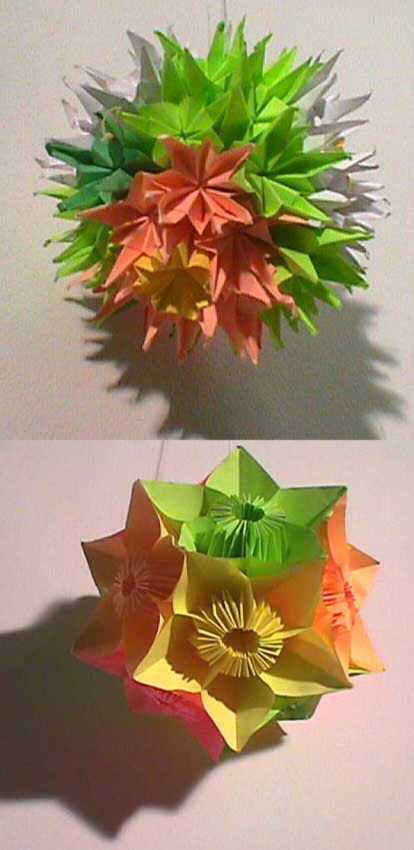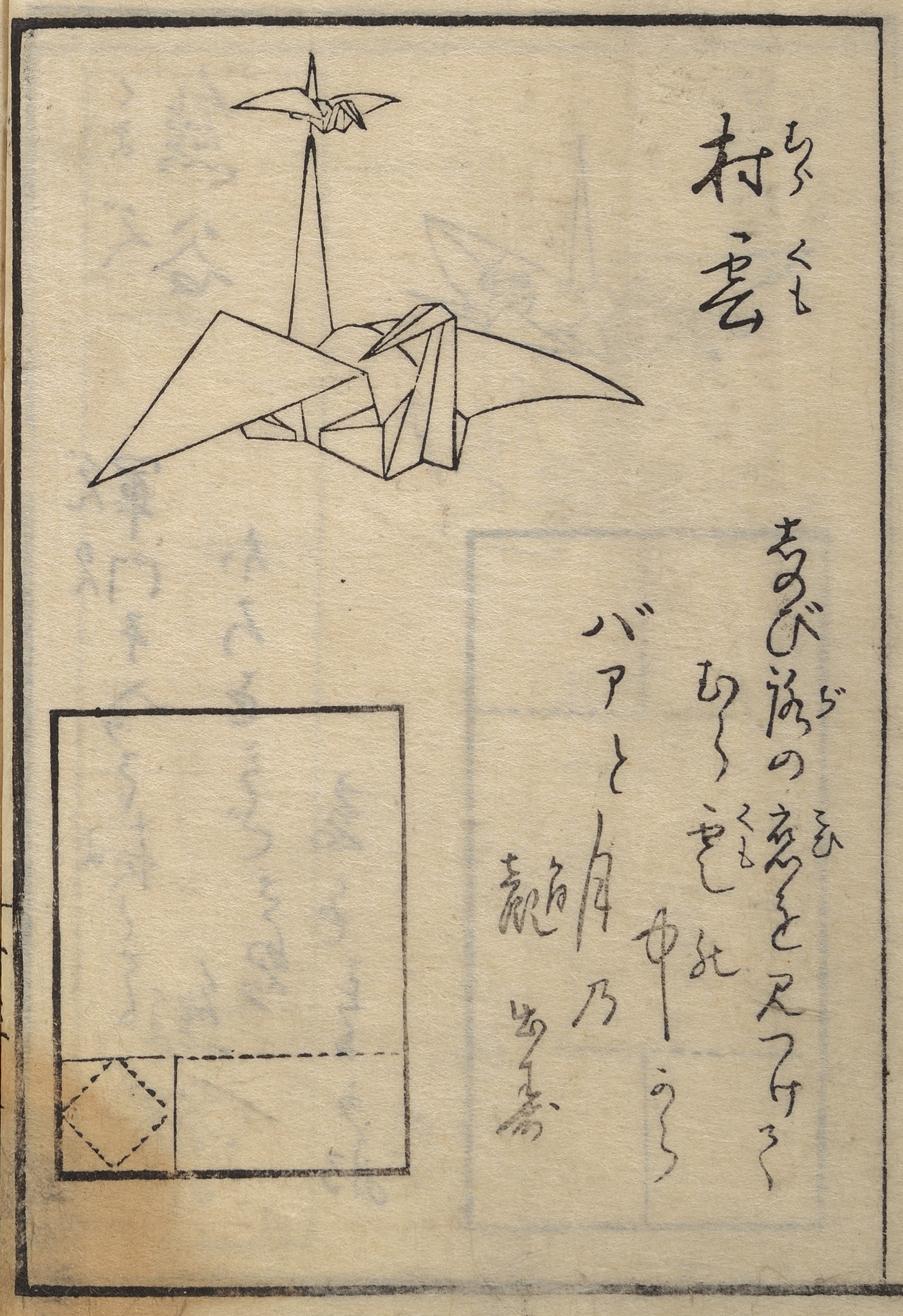|
Makoto Yamaguchi
, the Chairperson of Origami House, has taken an active part in origami as a professional creator after working with the Nippon Origami Association. In 1989, he opened "Gallery Origami House", a venue to showcase the works of origami creators. He has worked hard to encourage young creators to continue to improve their models, to interchange with foreign groups and creators abroad. His enthusiasm for origami has led him to become involved with origami associations around the world. JOAS ( Japanese Origami Academic Society) Board of Directors President; Board member of NOA ( Nippon Origami Association); lifetime member of OrigamiUSA, member of British Origami Society and Chief Editor of "Origami Tanteidan" magazine. Books * ''Let's Enjoy Paper Folding'' Vol. 1: Origami Flowers and Vegetables, * ''Let's Enjoy Paper Folding'' Vol. 2: Animals, * ''Kusudama The Japanese kusudama (薬玉; lit. medicine ball) is a paper model that is usually (although not always) created by sewing multip ... [...More Info...] [...Related Items...] OR: [Wikipedia] [Google] [Baidu] |
Origami
) is the Japanese paper art, art of paper folding. In modern usage, the word "origami" is often used as an inclusive term for all folding practices, regardless of their culture of origin. The goal is to transform a flat square sheet of paper into a finished sculpture through folding and sculpting techniques. Modern origami practitioners generally discourage the use of cuts, glue, or markings on the paper. Origami folders often use the Japanese word ' to refer to designs which use cuts. On the other hand, in the detailed Japanese classification, origami is divided into stylized ceremonial origami (儀礼折り紙, ''girei origami'') and recreational origami (遊戯折り紙, ''yūgi origami''), and only recreational origami is generally recognized as origami. In Japan, ceremonial origami is generally called "origata" (:ja:折形) to distinguish it from recreational origami. The term "origata" is one of the old terms for origami. The small number of basic Origami techniques, ... [...More Info...] [...Related Items...] OR: [Wikipedia] [Google] [Baidu] |
Japanese Origami Academic Society
Japanese may refer to: * Something from or related to Japan, an island country in East Asia * Japanese language, spoken mainly in Japan * Japanese people, the ethnic group that identifies with Japan through ancestry or culture ** Japanese diaspora, Japanese emigrants and their descendants around the world * Japanese citizens, nationals of Japan under Japanese nationality law ** Foreign-born Japanese, naturalized citizens of Japan * Japanese writing system, consisting of kanji and kana * Japanese cuisine, the food and food culture of Japan See also * List of Japanese people * * Japonica (other) * Japonicum * Japonicus * Japanese studies Japanese studies (Japanese: ) or Japan studies (sometimes Japanology in Europe), is a sub-field of area studies or East Asian studies involved in social sciences and humanities research on Japan. It incorporates fields such as the study of Japanese ... {{disambiguation Language and nationality disambiguation pages ... [...More Info...] [...Related Items...] OR: [Wikipedia] [Google] [Baidu] |
Nippon Origami Association
Japan ( ja, 日本, or , and formally , ''Nihonkoku'') is an island country in East Asia. It is situated in the northwest Pacific Ocean, and is bordered on the west by the Sea of Japan, while extending from the Sea of Okhotsk in the north toward the East China Sea, Philippine Sea, and Taiwan in the south. Japan is a part of the Ring of Fire, and spans an archipelago of 6852 islands covering ; the five main islands are Hokkaido, Honshu (the "mainland"), Shikoku, Kyushu, and Okinawa. Tokyo is the nation's capital and largest city, followed by Yokohama, Osaka, Nagoya, Sapporo, Fukuoka, Kobe, and Kyoto. Japan is the eleventh most populous country in the world, as well as one of the most densely populated and urbanized. About three-fourths of the country's terrain is mountainous, concentrating its population of 123.2 million on narrow coastal plains. Japan is divided into 47 administrative prefectures and eight traditional regions. The Greater Tokyo Ar ... [...More Info...] [...Related Items...] OR: [Wikipedia] [Google] [Baidu] |
OrigamiUSA
OrigamiUSA (sometimes abbreviated as "OUSA") is the largest origami organization in the United States, with offices located at the American Museum of Natural History in New York City. It was founded in 1980 by Michael Shall, Alice Gray, Lillian Oppenheimer, Robert E. Neale, and others as the Friends of the Origami Center of America and was renamed OrigamiUSA on July 1, 1994. Since its founding, OrigamiUSA has been fully non-profit and volunteer-based and is a 501(c)(3) corporation. OrigamiUSA organizes the largest origami convention in the world each June in New York City, and in addition publishes a magazine, ''The Paper,'' an annual collection of origami diagrams, and a website, and also provides educational materials and supports numerous other activities that spread the art of origami. Mission The mission statement is the following: "OrigamiUSA's mission is to share the joy and appreciation of paperfolding, preserve its history, nurture its growth, bring people together, and en ... [...More Info...] [...Related Items...] OR: [Wikipedia] [Google] [Baidu] |
British Origami Society
The British Origami Society is a registered charity (no. 293039), devoted to the art of origami (paper folding). The Society has 700 members worldwide and publishes a bi-monthly magazine called "British Origami". They also have a library which is one of the world's largest collections of Origami resources, containing well over 4000 books, and a similar quantity of magazines, journals, convention packs and catalogues. As stated in the constitution of the society, its aims are, "to advance public education in the art of Origami and to promote the study and practice of Origami in education and as a means of therapy for the relief of people who are sick or mentally or physically handicapped".The constitution of the British Origami Society. http://www.britishorigami.info/society/constitution.php The society was founded at its inaugural meeting held at The Russell Hotel in London 28 October 1967. It was formed from the Origami Portfolio Society which had been founded in 1965. The first ... [...More Info...] [...Related Items...] OR: [Wikipedia] [Google] [Baidu] |
Kusudama
The Japanese kusudama (薬玉; lit. medicine ball) is a paper model that is usually (although not always) created by sewing multiple identical pyramidal units together using underlying geometric principles to form a spherical shape. Alternately the individual components may be glued together. (e.g. the kusudama in the lower photo is entirely glued, not threaded together) Occasionally, a tassel is attached to the bottom for decoration. The term ''kusudama'' originates from ancient Japanese culture, where they were used for incense and potpourri; possibly originally being actual bunches of flowers or herbs. The word itself is a combination of two Japanese words ''kusuri'' ("medicine") and ''tama'' ("ball"). They are now typically used as decorations, or as gifts. The kusudama is important in origami particularly as a precursor to modular origami. It is often confused with modular origami, but is not such because the units are strung or pasted together, instead of folded together as ... [...More Info...] [...Related Items...] OR: [Wikipedia] [Google] [Baidu] |
Origami Artists
) is the Japanese art of paper folding. In modern usage, the word "origami" is often used as an inclusive term for all folding practices, regardless of their culture of origin. The goal is to transform a flat square sheet of paper into a finished sculpture through folding and sculpting techniques. Modern origami practitioners generally discourage the use of cuts, glue, or markings on the paper. Origami folders often use the Japanese word ' to refer to designs which use cuts. On the other hand, in the detailed Japanese classification, origami is divided into stylized ceremonial origami (儀礼折り紙, ''girei origami'') and recreational origami (遊戯折り紙, ''yūgi origami''), and only recreational origami is generally recognized as origami. In Japan, ceremonial origami is generally called "origata" ( :ja:折形) to distinguish it from recreational origami. The term "origata" is one of the old terms for origami. The small number of basic origami folds can be combine ... [...More Info...] [...Related Items...] OR: [Wikipedia] [Google] [Baidu] |
1944 Births
Events Below, the events of World War II have the "WWII" prefix. January * January 2 – WWII: ** Free France, Free French General Jean de Lattre de Tassigny is appointed to command First Army (France), French Army B, part of the Sixth United States Army Group in North Africa. ** Landing at Saidor: 13,000 US and Australian troops land on Papua New Guinea, in an attempt to cut off a Japanese retreat. * January 8 – WWII: Philippine Commonwealth troops enter the province of Ilocos Sur in northern Luzon and attack Japanese forces. * January 11 ** President of the United States Franklin D. Roosevelt proposes a Second Bill of Rights for social and economic security, in his State of the Union address. ** The Nazi German administration expands Kraków-Płaszów concentration camp into the larger standalone ''Konzentrationslager Plaszow bei Krakau'' in occupied Poland. * January 12 – WWII: Winston Churchill and Charles de Gaulle begin a 2-day conference in Marrakech ... [...More Info...] [...Related Items...] OR: [Wikipedia] [Google] [Baidu] |



